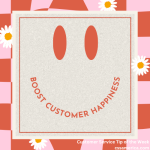When you’re dealing with somebody who is anxious or nervous about a situation, a customer who feels like they don’t have much control, an individual who is unsure and uncertain, it’s important to put the customer at ease. It’s important to build their comfort level. It’s important to help them to become more confident by taking away the fear of the unknown.
One step in the technique that we use to train our clients for these situations involves employees talking about themselves. If you’re the person they’re interacting with to help them with their concern, it helps their confidence that things will get resolved if they become confident in you. So, after listening to them and asking them questions about their situation, convey your understanding of their situation back to them so that they feel like you are understanding what they need.
Then…talk about yourself:
- I’ve been working here for 10 years now, and I’m very familiar with the different types of solutions that will help you in this situation.
- I’ve worked with several other clients over the last 12 months who had similar needs, so I’m confident we’ll be able to help you.
- We’ve helped other customers with similar circumstances, so we definitely have some options for you to consider.
- When I heard your story, it immediately reminded me of some other customers that we’ve helped through this process.
- I can definitely help you with that. I’ve got a lot of experience in this particular area, so let’s talk about what we can do for you.
Customer service is all about serving others, conveying our understanding of others, showing some empathy. But sometimes the best way to serve others – when they are anxious or nervous about something – is to find ways for them to feel more comfortable, become more confident.
Talk About Yourself to Build Customer Confidence.
Signup for FREE Tips! Contact Us More Resources for You Visit Our Home Page
























